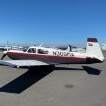VNAV into Approach
-
Members Online
- Pinecone
- Meshach
- MikeOH
- Twing207
- caractacuspdoom
- N201MKTurbo
- TCC
- kasm
- natdm
- TheAv8r
- Sonar
- KSMooniac
- IvanP
- Reed Campbell
- ta2too
- EricJ
- M20F
- Reek778
- cemmett
- Utah20Gflyer
- ToddCC22
- Aerodon
- takair
- Hector
- Tim Jodice
- Hank
- exM20K
- Jim Peace
- redbaron1982
- hammdo
- wombat
- SKI
- Sabremech
- AH64Bennett
- Ibra
- Ragsf15e
- BaldEagle
- 201er
- LANCECASPER
- FlyboyKC
- FlyingScot
- Marcopolo
- Cfidave
- Kelpro999
- Leavenworth5


Recommended Posts
Join the conversation
You can post now and register later. If you have an account, sign in now to post with your account.